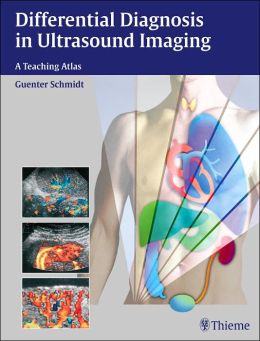-91%
Course Overview
Decision-Support Tools for Radiologists
This activity aims to equip healthcare professionals involved in abdominal imaging with essential knowledge and skills to optimize patient care. Upon completion, participants will gain insights into:
- The availability and utility of decision-support tools for radiologists, empowering them to make more precise and clinically relevant diagnoses.
- Creating an interactive learning experience where participants will engage in diagnosing various abdominal disorders through specific imaging tests, with emphasis on clinical correlations.
- Understanding the appropriate utilization of imaging modalities (CT, MR, sonography, and fluoroscopy) for commonly encountered abdominal conditions.
- Emphasizing the importance of critical thinking and prudent use of imaging, laboratory tests, and clinical examinations to ensure optimal patient outcomes.
- Facilitating extensive discussions, question-and-answer sessions, and feedback exchanges between participants and the speaker.
Course Curriculum
This comprehensive curriculum delves into a wide range of topics pertaining to abdominal imaging:
Decision-Support Tools for Radiologists
- Accessibility and benefits of decision-support tools
- Enhancing diagnostic accuracy and clinical utility
Acute Right Upper Quadrant Pain
- Differential diagnoses and imaging modalities
- Role of imaging in guiding management decisions
Acute Left Lower Quadrant Pain
- Common causes and imaging techniques
- Interpretation of results for accurate diagnosis
Cystic Pancreatic Mass
- Characterization and classification using imaging
- Management considerations based on imaging findings
Cystic Hepatic Mass
- Types, imaging features, and clinical significance
- Role of imaging in guiding treatment decisions
Cystic Renal Mass
- Spectrum of cystic lesions and imaging characteristics
- Differential diagnoses and management strategies
Focal Lesion in the Non-Cirrhotic Liver
- Imaging techniques for detection and characterization
- Role of imaging in assessing tumor behavior and guiding clinical decisions
Focal Lesion in the Cirrhotic Liver
- Impact of cirrhosis on lesion detection and characterization
- Imaging modalities for accurate diagnosis and management planning
Abdominal Hemorrhage
- Imaging findings and techniques for localization
- Guiding interventions and monitoring response to treatment
Fluoroscopy in the CT-Endoscopy Era (Evaluation of Post-Operative Complications)
- Complementary roles of fluoroscopy and CT
- Assessing complications following surgical procedures
Bariatric Surgery
- Imaging considerations before, during, and after bariatric surgery
- Detecting and managing potential complications
Anti-Reflux Surgery
- Pre- and post-operative imaging protocols
- Evaluating surgical outcomes and identifying any complications
Ivor-Lewis Esophagectomy (and Variants)
- Imaging techniques for pre-operative planning and post-operative surveillance
- Detecting potential complications and optimizing patient outcomes
Dilated Bowel
- Imaging modalities for accurate diagnosis
- Differential diagnoses and management considerations
Small Bowel Wall Thickening
- Causes and imaging features of small bowel wall thickening
- Role of imaging in guiding further investigations and treatment decisions
Colonic Wall Thickening
- Imaging techniques for assessment and characterization
- Differential diagnoses and management implications
Malpractice Issues in Abdominal Imaging
- Ethical and legal considerations in abdominal imaging
- Common pitfalls and strategies for minimizing liability risks










Reviews
Clear filtersThere are no reviews yet.